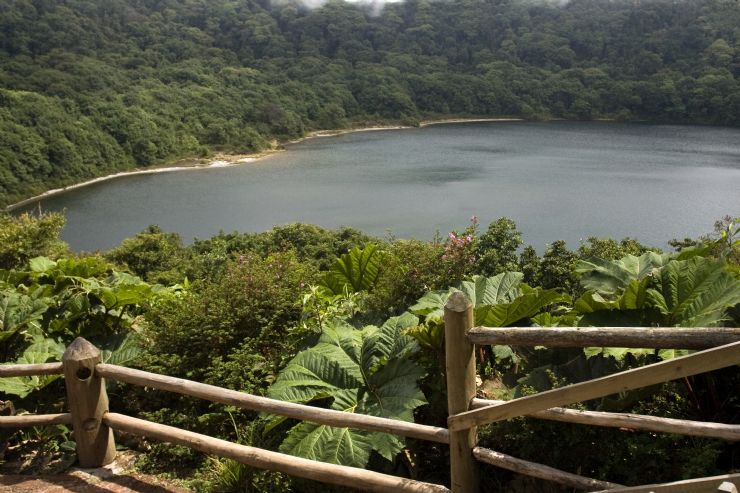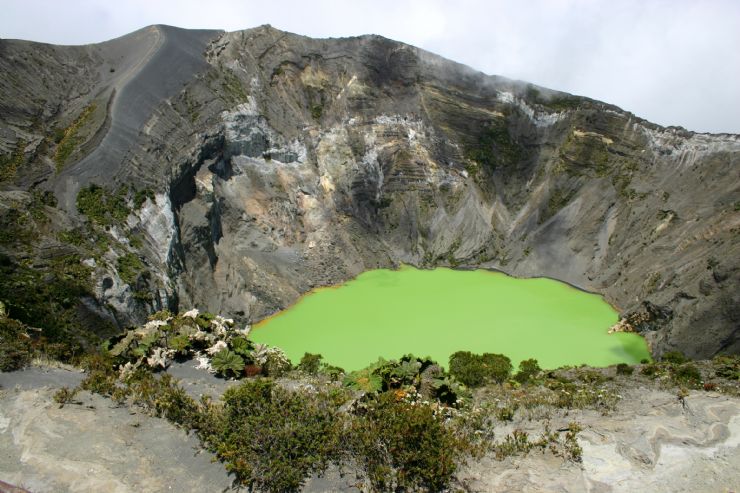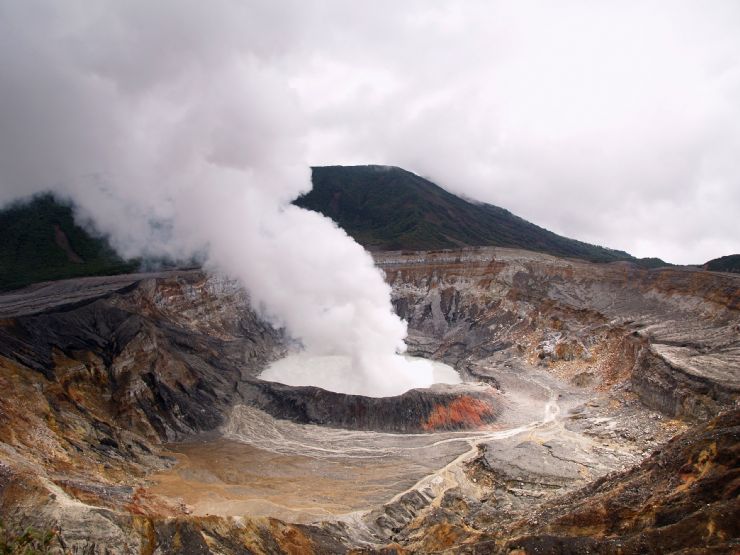 Botos Lagoon at Poas Volcano
Botos Lagoon at Poas VolcanoI appreciate all of the beauty in Costa Rica, my home, even those that leave me in nervous awe. I’m talking about volcanoes, of course! Volcanoes can take a local landscape from one star to five stars, and even create habitats for many of my animal friends. However, there is an obvious dark side to volcanoes, which we see when they erupt.
7 Days / 6 Nights
Starting at $779 per person
Currently, there are three volcanoes in Costa Rica that have volcanologists reporting seismic activity and have caused recent evacuations. While this can be a scary time for residents and tourists alike, you should keep in mind that there are experts observing and reporting all activity, which will lead to early detection of threats. I feel safe knowing that I’d have enough warning to hop out of the threatened area.
Active Volcanoes in Costa Rica
The three most active volcanoes in Costa Rica right now are the Irazú Volcano, the Poás Volcano and the Turrialba Volcano. Each volcano has a unique history and has experience different types of eruptions, but each contributes to the rich experiences that people have in Costa Rica. All three of these volcanoes are part of the Central Mountain Range.
 Irazú Volcano Crater
Irazú Volcano CraterIrazu Volcano
The Irazú Volcano National Park contains the Irazú Volcano, which is close to the city of Cartago (about 16 miles east of San Jose). The park itself is well over 5,000 acres, and houses many of my friends including owls, armadillos and many kinds of birds. This volcano does have a catastrophic reputation that earned it the nickname “The Colossus.” The Irazú Volcano reaches 11,260 feet and its summit craters are a popular tourist location. The first recorded eruption was in the early 1700's, and it has erupted over 20 times since then. The most recent eruption was in the early 1990's, and the eruptions are historically explosive. An eruption in 1963 even spread ash through San Jose.
 Póas Volcano Crater Smoking
Póas Volcano Crater SmokingPoas Volcano
The Poás Volcano is part of the Poás Volcano National Park, which is in the Alajuela Province (40 miles north of San Jose). The park is over 16,000 acres, and the northern crater lake is known as one of the most acidic lakes in the world. I definitely do not go for swims here! The Poás Volcano is a stratovolcano that had its first recorded eruption in the early 1800. Since then, it has erupted nearly forty times. This volcano has saw eruption-like activity in 2009, and its eruptions are often characterized by ejections that look like geysers.
.jpg) Turrialba Volcano Erupting
Turrialba Volcano EruptingTurrialba Volcano
The Turrialba Volcano is a stratovolcano, and is the most eastern volcano in Costa Rica. It is 10,958 feet high, and about forty miles east of San Jose on the Cartago province, and is actually adjacent to the Irazú Volcano. You can find ferns, mosses and more in the forests below the summit, which is where I like to hang out. Increased activity at the summit has caused concerns about hiking to the craters, and there have been time limits placed on how long anyone can spend at the summit. This volcano has seen at least five large eruptions since records began, occurring in the 1800's, all of them explosive. However, increased activity at the Turrialba Volcano National Park has been reported since around 2001. As recent as the year 2010, the volcanic activity produced ash that resulted in evacuations for two villages.
Volcanic Activity Alert Levels
Costa Rica tourist should not be scared off by this volcanic activity. The activity is closely monitored, and alert levels are used to help keep locals and visitors safe. You should familiar yourself with the alert levels, and research recent activity for any areas that you are going to visit. A green alert is preventative, and could call for evacuations. A yellow alert means that an eruption is probable, and emergency procedures should be engaged. A red level is high, and means that an eruption is imminent. Anyone in the immediate and surrounding areas should evacuate if the alert level is raised to red.

